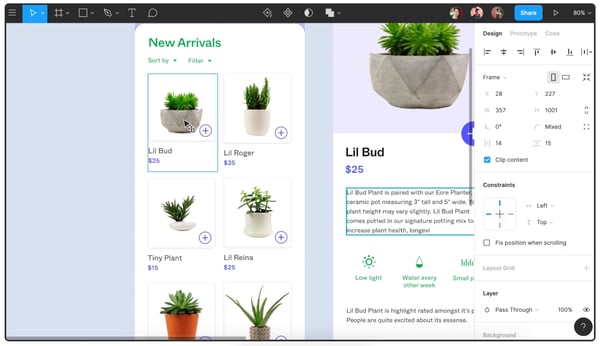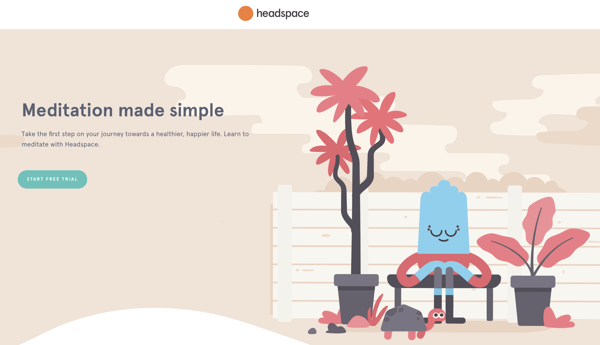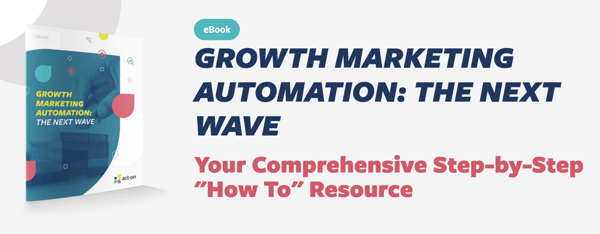Generating leads for your SaaS solution doesn’t have to be a mystery, or a struggle. With the right marketing strategy, it becomes automatic. Get qualified leads into your SaaS marketing flywheel with these tried and tested lead generation plans. Of course, it all starts with creating a product that solves a need for a real market segment. After all, there’s got to be a big enough pool to pull leads from in the first place. Then, entice those potential customers with a freemium plan, a free trial, or a content offer that gets them onto your list and ready to nurture.
Let’s start with some due diligence.
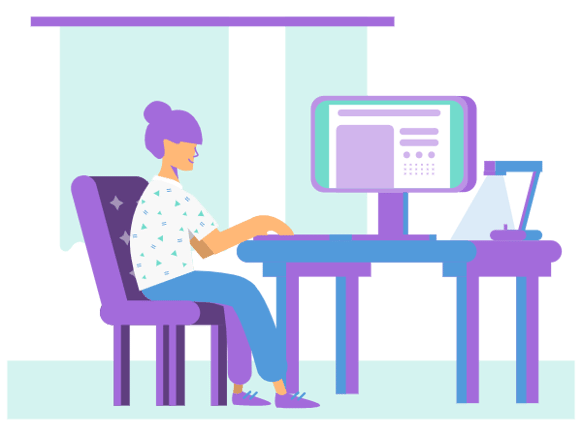
Do Your Due Diligence First: Is There a Market for What You’re Making?
There’s nothing more disheartening than building out a SaaS solution you think is fantastic, marketing it, getting a few users, and then realizing things aren’t scaling because there simply isn’t a big enough market for what you’ve built. So, our first step for successful SaaS lead generation is to make sure there’s a market in the first place. After all, if there aren’t leads out there to attract, what’s the point in spending time, effort, and resources to try and grab them?
The two main parts of doing due diligence on a SaaS product are conducting market research and building a minimum viable product (MVP). Market research includes making sure you have an innovative idea that is hard to replicate, understanding the people you’ll serve it to, and finding out how many of them exist in the current market. Creating a minimum viable product means building out the most basic features you’d like to offer your intended market, and releasing it to a select group. This allows you to gain priceless feedback from real users before you spend a bunch of investment capital (or worse, your own hard-saved cash) to build out a solution people may not need or want.
Now that we’ve discussed due diligence, let’s get into the three main ways for SaaS companies to do lead generation.
1: Offer Essential Features in a Freemium Plan
Once you know you’ve got a good product, and there are enough people out there who actually want it, it’s time to start some real lead generation. Many successful SaaS companies are expanding beyond the traditional “free trial” model with a newly popular pricing structure known as a Freemium. Freemium will include a free tier as well as one or more paid, “premium” tiers or add-ons. Hence, the hybrid term freemium. At the free tier, users get access to a basic level of your SaaS solution that they can use forever for free. Then, you start building income from these leads by offering paid access to premium features.
One example of this is the visual design tool, Canva. Anyone can use all the basic functionalities of Canva for free with sign-up (hello, leads), and then get add-ons like premium images, graphics and templates, or even sign up for a Professional or Enterprise subscription plan to get more features. With a Canva Enterprise subscription, for example, users can establish brand kits for use across teams and create built-in workflows for design approval.
 Another example is Figma, a collaborative interface design tool used by creative teams at companies like Twitter and Uber. The platform’s freemium version allows users to design, prototype and code assets for up to 3 projects, and includes Figma’s online workspace as well as its desktop app. Upgrading to one of Figma’s two paid subscription levels opens up features like unlimited projects, specified user permissions, sharable team libraries and org-wide design systems.
Another example is Figma, a collaborative interface design tool used by creative teams at companies like Twitter and Uber. The platform’s freemium version allows users to design, prototype and code assets for up to 3 projects, and includes Figma’s online workspace as well as its desktop app. Upgrading to one of Figma’s two paid subscription levels opens up features like unlimited projects, specified user permissions, sharable team libraries and org-wide design systems.
The idea is to make your solution indispensable. Then, offer additional features that the user cannot live without, making offers on an ongoing timeline that isn’t limited by the free trial period. Use email, in-app messaging and other tactics to offer upgrades that enhance the effectiveness of your SaaS solution. The key is to make sure you don’t skimp on the features you include in your freemium version. The no-cost version of your tool should be useful enough to get your lead hooked, but leave a few key features out so there’s a reason to upgrade. It’s a fine line that requires intimate knowledge of your intended customer base, and involvement from the product team to help with feature selection and build-out of the freemium model.
2: A Freemium Alternative: Give a Taste of the Full Solution with a Free Trial
Many SaaS companies immediately think of the free trial approach when it comes to lead generation, and rightfully so. It’s been the tried and true way of getting potential customers into the flywheel since the 1990s when we had to use AOL CDs for dial-up minutes. The idea is to help your customers see it to believe it with a great trial that provides access to all of the best features your SaaS solution offers. Generally, free trials last around two weeks, depending on the solution and specific market. Some trials are longer, especially for B2B solutions in an enterprise environment, or solutions that are more complex.
Headspace is a meditation and mindfulness app that offers a two-week trial that automatically converts into a $70 yearly subscription. In the trial, users get access to audio education, a daily meditation via text or email across subjects like stress, focus or sleep, and even mini-workouts to strengthen the mind-body connection.
Another example is the meditation app Calm, which offers a freemium version as well as a 7-day trial of their premium version for new subscribers.
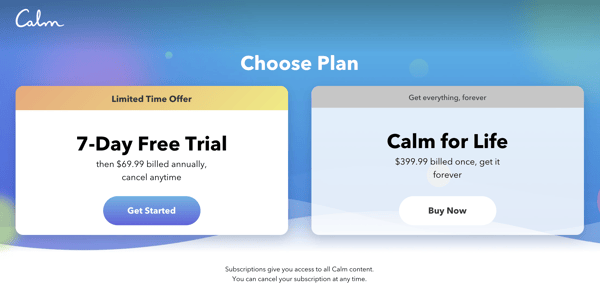 Your free trial is one of the best magnets for new leads. Use it as the highlight of your advertising campaigns, mention it on social media, and lead your website visitors to it with well-placed website CTAs (calls-to-action). If your SaaS solution makes sense for the trial user, subscribing as a paid customer will be a no-brainer.
Your free trial is one of the best magnets for new leads. Use it as the highlight of your advertising campaigns, mention it on social media, and lead your website visitors to it with well-placed website CTAs (calls-to-action). If your SaaS solution makes sense for the trial user, subscribing as a paid customer will be a no-brainer.
There is a debate within the SaaS industry as to whether asking for a credit card at the time of free trial sign up is a good idea, or the fastest way to lose leads. Those who say yes argue that asking for a credit card up front better qualifies serious leads, and results in a much higher trial-to-paid conversion rate. On the other hand, waiting until the trial expires and asking for credit card information only when a purchase is imminent can ease the lead’s anxiety, and encourage more people to try your solution. Results can vary for different businesses, and most strategists agree it’s best to try each approach, see which brings you more customers, and continue with the tactic that works best for you.
3: Get Early-Stage Leads Hooked with Top-Of-Funnel Content Offers
Some of your potential customers will simply not be ready to sign up for your freemium or free trial right away. Perhaps they are just in the very beginning stages of researching solutions, or need to be convinced of the benefits of a solution like yours as a foundation for further exploration. Get those earlier stage leads engaged with a content offer that provides value to them at their current stage in the buyer’s journey.
Once you pull in organic traffic based on these well-planned topic clusters, or entice clicks with well-executed paid advertising, convert them as a lead with a premium content offer, such as a:
- ROI Calculator
- Checklist
- Webinar
- Quiz
- Ebook
- Whitepaper
- Newsletter Signup
- Video Demo
Known as a Top-of-Funnel (ToFu) offer, these options should aim to educate and excite. One example is an eBook from Act-On titled Growth Marketing Automation: The Next Wave. If a prospect is not quite ready for a demo with the sales team, this is the type of asset they’ll gladly start with instead.
The key is to educate, then provide an offer of further value in exchange for an email address. If the lead isn’t ready for a trial or freemium at the moment, use that email address to continue nurturing them until they are.
Lead Generation is Relationship Building
At the root of all great lead generation strategies is the intention to build great relationships. Whether or not someone ever becomes a customer, it pays to treat them like they’ll be the best paying customer you’ll ever have. Provide value, communicate with intention, answer questions, be available… all of these intentional actions will add up to a feeling of goodwill toward your company, and goodwill often equals ROI. SaaS marketing doesn’t have to be a mystery. Start with one of these three approaches, and you’ll be watching your contact list grow before your eyes.
This post has been about attracting potential customers and engaging with them. If you're curious about what comes next in your digital marketing efforts check out the rest of the flywheel here.
This post was originally published September 2020 and was updated in October 2021.
